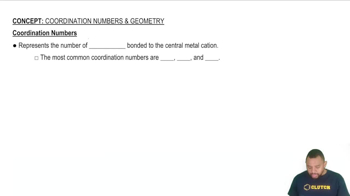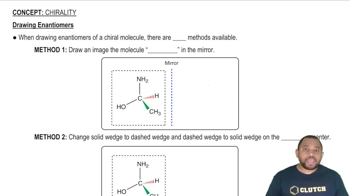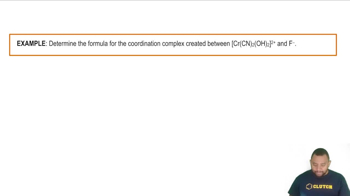Here are the essential concepts you must grasp in order to answer the question correctly.
Coordination Chemistry
Coordination chemistry is the study of coordination compounds, which consist of a central metal atom bonded to surrounding molecules or ions called ligands. These complexes can exhibit various geometries and properties, influencing their reactivity and interactions. Understanding the nature of these bonds and the arrangement of ligands is crucial for predicting the behavior of metal complexes, including their chirality.
Recommended video:
Chirality and Enantiomers
Chirality refers to the property of a molecule that makes it non-superimposable on its mirror image, much like left and right hands. Molecules that exhibit chirality can exist as pairs of enantiomers, which have identical physical properties but differ in their interaction with polarized light and biological systems. The presence of chiral centers, often involving asymmetric arrangements of ligands around a central atom, is essential for the formation of these enantiomers.
Recommended video:
Cobalt(III) Complexes
Cobalt(III) complexes are coordination compounds where cobalt is in the +3 oxidation state, typically forming octahedral geometries with six ligands. The choice of ligands and their spatial arrangement can lead to the formation of chiral complexes. Designing a chiral cobalt(III) complex without carbon atoms requires careful selection of ligands that can create an asymmetric environment around the cobalt center, thus enabling the potential for chirality.
Recommended video:
Coordination Complexes Example





